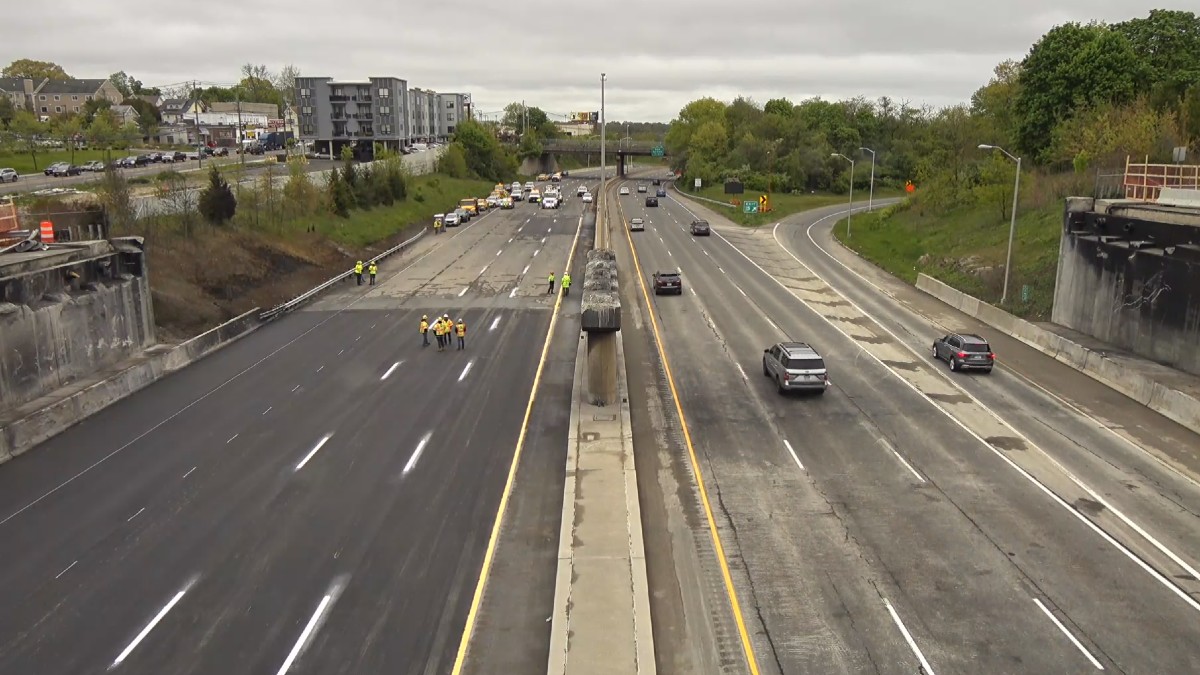After nearly two days of complaints from riders about trains being far too crowded to safely maintain social distancing — with photos that prove it — Long Island Rail Road announced that it would be restoring service by the end of the month.
LIRR President Phil Eng said Tuesday that the railroad will go back to its "previous timetable" on March 29.
"We heard our customers' concerns about our new schedule loud and clear," Eng said in a statement announcing the schedule returning to normal. "In the meantime, we will continue to strategically add additional trains and lengthen trains to meet evolving ridership levels. We continue to monitor seating availability with unprecedented clarity thanks to new technology. As declining COVID-19 cases and increased deployment of the vaccine allow New York to fully reopen, customers should expect to see more riders returning to trains every day, and we look forward to it."
Eng said previously that car-by-car data shows most trains were below 50 percent of capacity offering commuters ample room to stay safe. Riders disagreed, with one tweeting "Fake news. I rode this morning and the same crap schedule and crowded cars were in effect."
Get Tri-state area news and weather forecasts to your inbox. Sign up for NBC New York newsletters.
LIRR faced growing pressure not only from riders, but government officials as well. Gov. Andrew Cuomo called on the transit agency to restore more frequent service, saying that the attempt at reduced service "certainly didn't work well."
"You don't want crowded trains, crowded platforms, now. I understand the financial constraints. i understand there's a reduced ridership. But it's smarter to have fewer people on a train during this period, even if it's not cost-effective," Cuomo said.
News
New York City Mayor Bill de Blasio joined in on the criticism, saying during his Tuesday press conference that "if we're gonna give people faith in mass transit, there actually has to be service there for them."
Nassau County Executive Laura Curran cheered the decision to return to the previously scheduled service after cuts that she called "unacceptable." She said the timing was ill-advised, considering how the economy is slowly reopening once again and more people are going back to work.
After initial complaints came in throughout the day Monday, the transit agency at first agreed to bring back some of the trains it had taken away. It planned on bringing back four trains on the Babylon branch, in addition to two trains getting more stops, and three trains on the Ronkonkoma line.
"With LIRR ridership levels at 24%, this schedule provides more than 75% of our normal, pre-pandemic service," the LIRR said in tweets announcing those initial additions. It is one arm of the MTA that has yet to bounce back from a dramatic dip in ridership since the start of the pandemic.
The initial changes started Monday. They were set to will keep off-peak fares on all trains even during peak hours, and service was still to be run on all 11 branches LIRR operates, just with fewer trains scheduled to run.
Many riders voiced deep frustration with LIRR after the changes were made, with Monday's morning rush hour seeing crowded trains.
"It was outrageous. We are packed in there like sardines during a pandemic," a man who only wanted to be identified as Mr. Jones said. "If I knew this was going to happen, I would have never bought a monthly ticket. It makes absolutely no sense."
The evening rush wasn't much better. Photos shared with NBC New York by fed-up commuters showed people crowding in aisles, standing or sitting shoulder to shoulder in enclosed LIRR cars. Many pictures were reminiscent of commuting pre-COVID. There were also reports of multiple delays and train cancellations.
Long Island State Senator Todd Kaminsky said Tuesday that the level of frustration among riders was "palpable." After the announcement bringing back normal service, Kaminsky said the move will bring back "sane, safe and dignified" commutes.
Eng said the photos of crowded trains Monday were isolated trouble spots, saying a majority of the trains ran below capacity. He said that 95 percent of trains were at 70 percent capacity or less.
The MTA is set to receive an additional $6.5 billion in federal funding, which they said will help them avoid any drastic cuts to service.



